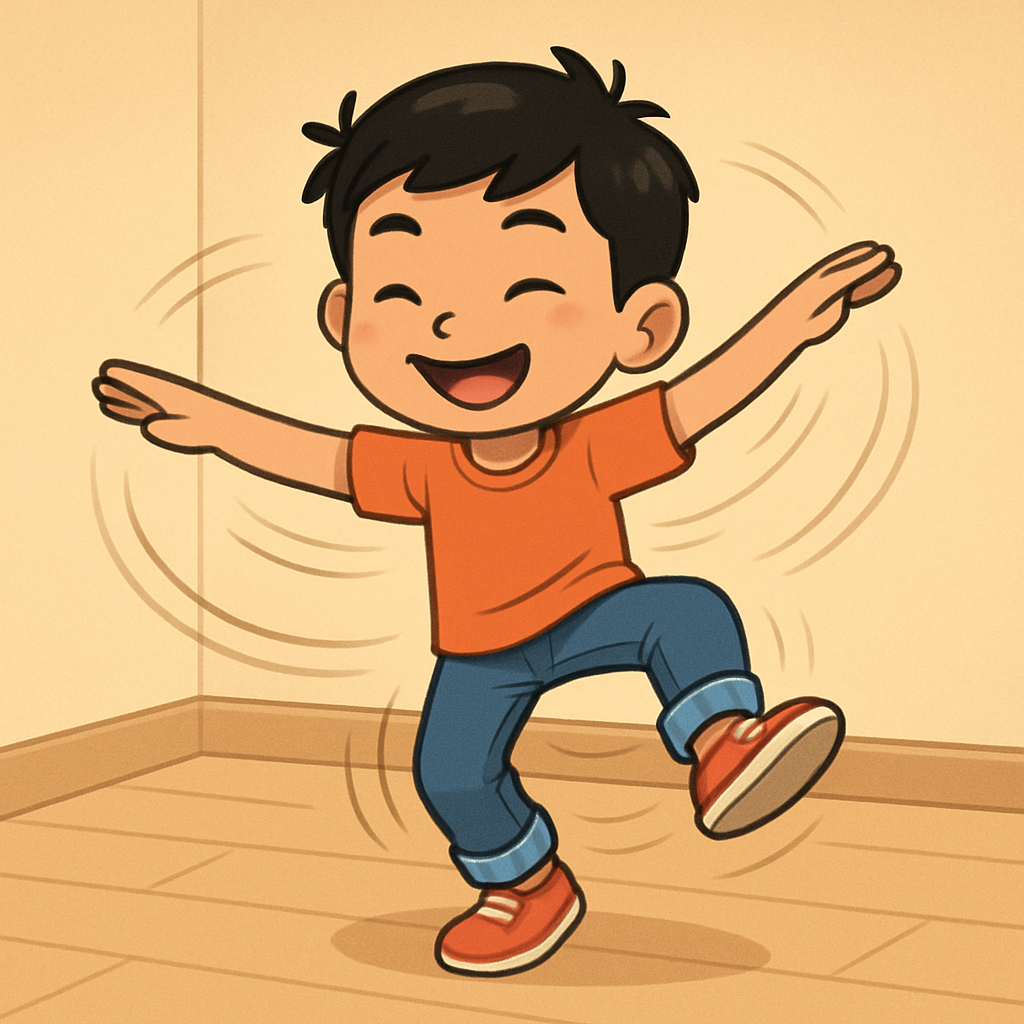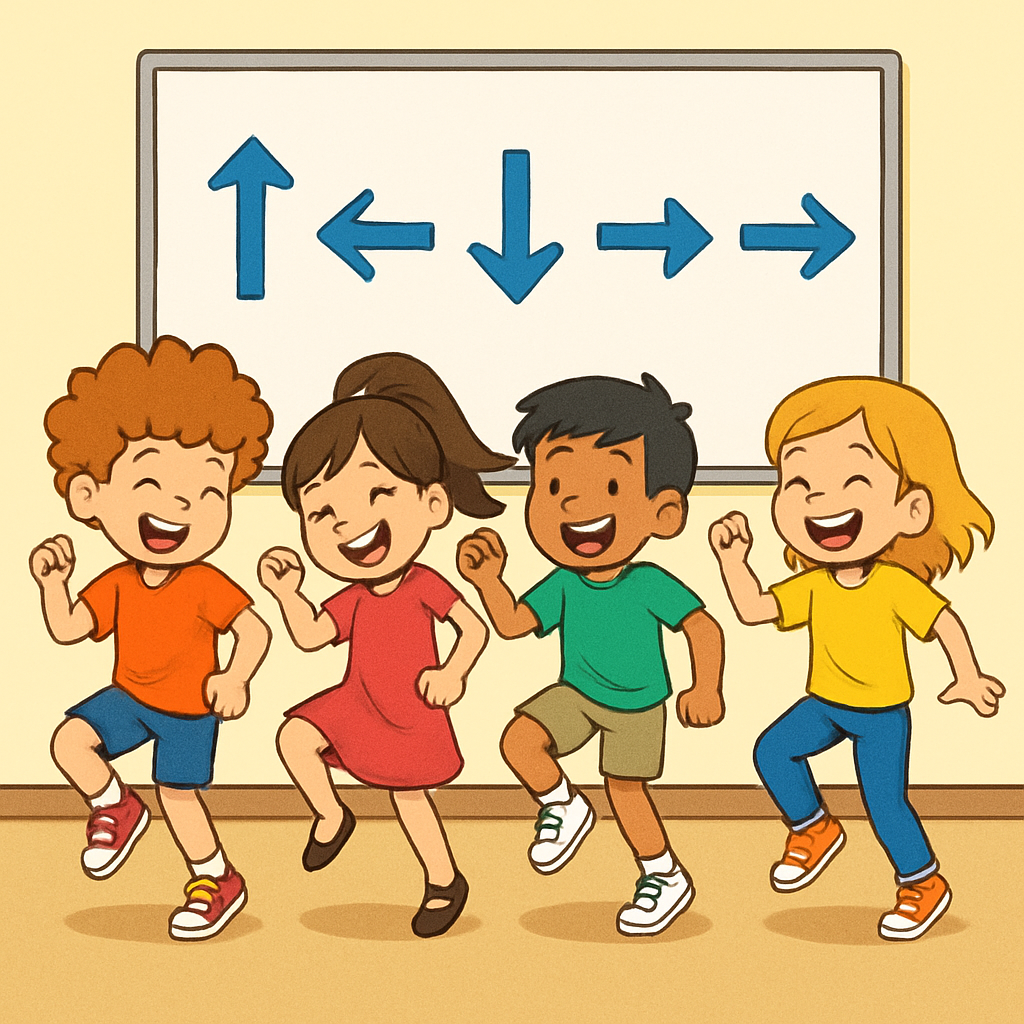 Today you’ll introduce dance algorithms—repeating a pattern—through playful code dances.
Today you’ll introduce dance algorithms—repeating a pattern—through playful code dances.
In ur last lesson, pupils were the programmers (they gave the instructions). Today they’re the computers—they’ll follow the instructions exactly through short dance sequences, keeping the steps in order.
Say to the class: “Last time you made the code. Today you follow the code—copy each dance step exactly, in the right order!”
You may want to clear a little space; it’s about to get groovy!
Display the sequence below on your classroom screen. Demonstrate each move individually so every child sees what it looks like (and how to do it safely).
Then put the sequence together in one go while saying the steps out loud:
“First … Next … Then … Finally …”
Do it slowly twice with the class mirroring you. If anyone gets mixed up, say “Bug—reset!” and start from the top.
Put the Random Dance Generator on your classroom screen.
Read the sequence exactly as shown and have the class copy it slowly once, then at a steady pace while you count:
Tap Freeze to keep a good sequence on screen, then Spin again for a new one (let a volunteer press Spin for fun).
Print and Distribute the My Move worksheet (1 per student).
Ask each pupil to draw one simple move and name it in 1–2 words.
Show one quick example on the board.
Allow students time to finish their worksheets and collect the finished sheets (or have pupils bring them up).
 Pick 3–4 worksheets and stick them on the board left to right to make a sequence.
Pick 3–4 worksheets and stick them on the board left to right to make a sequence.
Read the moves in order, demonstrate once, then have the class follow the whole sequence together—slowly first, then once at a steady pace.
If a move isn’t clear, invite its author to show it and agree a simple name, then try again.
If time allows, swap in a few new sheets and run more combos.